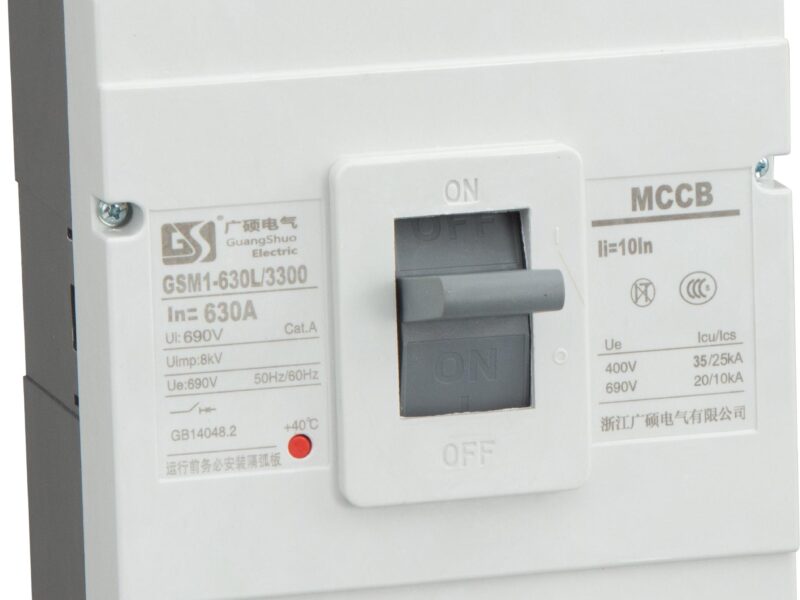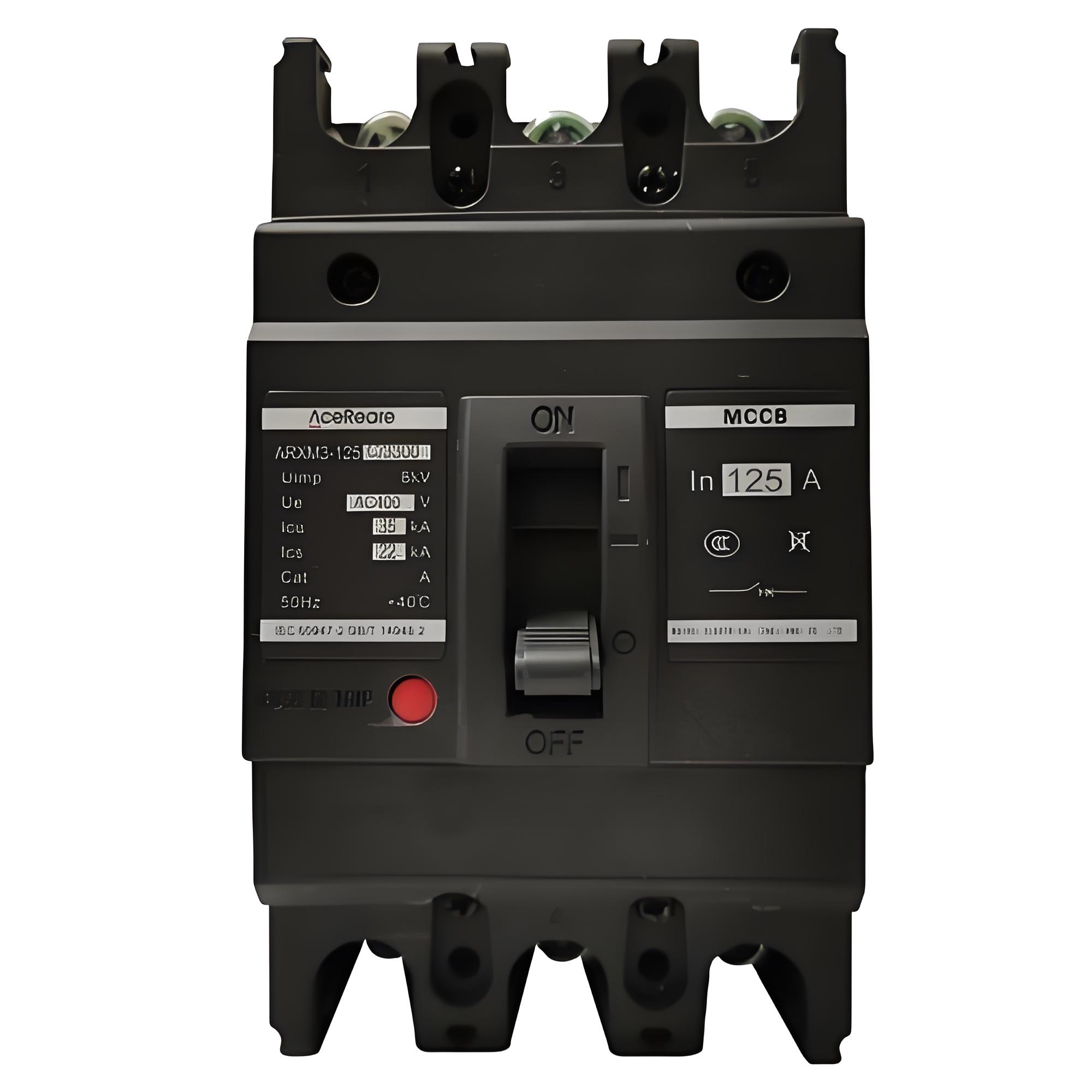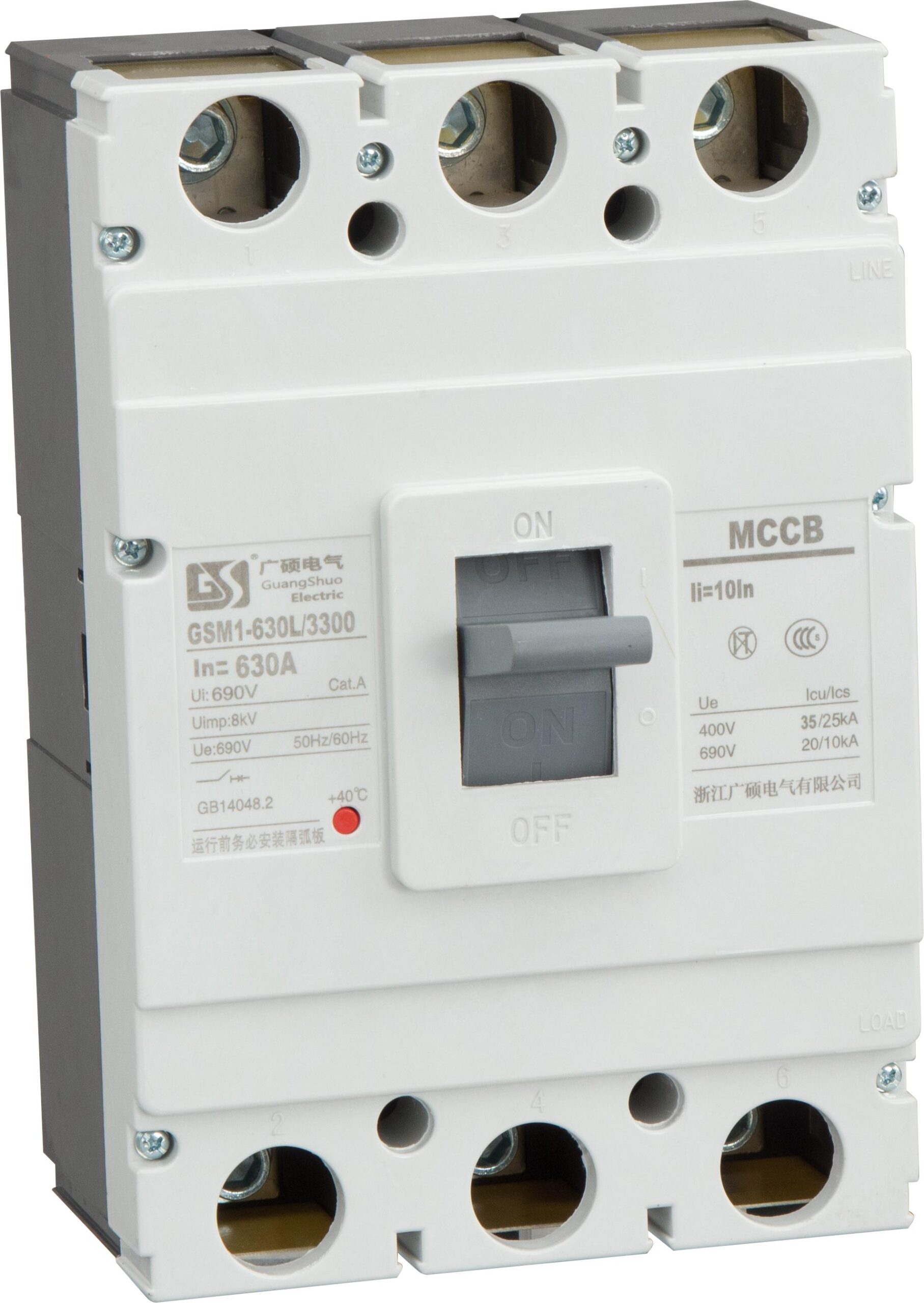
Five Key Factors for Selecting an MCCB
1. MCCB Frame Size and Rated Current
The frame size defines the maximum trip unit that can be installed within a specific MCCB housing. The rated current refers to the maximum current the MCCB can carry continuously without tripping.
For a given MCCB series, different frame sizes and rated currents are available. Selection must ensure that the chosen MCCB includes both the correct frame size and rated current. Additionally, attention should be given to the trip unit settings, which are often expressed as multiples of the rated current (e.g., 1.2In, 1.3In). Some electronic trip MCCBs allow adjustable overload protection current to meet specific needs.

2. Rated Insulation Voltage
The rated insulation voltage is the design voltage for which the MCCB is intended. If not explicitly stated, it is generally considered the maximum rated operating voltage. In practical applications, the rated operating voltage determines the MCCB’s switching capability, commonly at 380V, 50Hz or 600V, 50Hz.
When selecting an MCCB, it is crucial to ensure that its rated operating voltage matches the system voltage. For example, an MCCB rated for 380V should not be used in a 660V or 1140V system.

3. Rated Short-Circuit Breaking Capacity
The short-circuit breaking capacity represents the MCCB’s ability to interrupt fault currents under specified conditions. There are two key types:
- Ultimate Short-Circuit Breaking Capacity (Icu): The maximum fault current the MCCB can interrupt without being required to continue operation.
- Service Short-Circuit Breaking Capacity (Ics): The fault current level at which the MCCB can interrupt and still function afterward.
When selecting an MCCB, its breaking capacity should match the expected short-circuit fault levels in the system. Breaking capacity options usually include 25%, 50%, 75%, or 100% of the expected fault current, with 50%-75% being the most common.

4. Accessory Functions
MCCB accessories enhance protection and control functions. Common accessories include:
- Auxiliary Contacts: Indicate the MCCB’s ON/OFF status but do not confirm fault tripping. For MCCBs rated 100A and below, they are single contact switches, while 225A and above use bridge-type contacts.
- Alarm Contacts: Trigger an alert when the MCCB trips due to overload, short-circuit, or undervoltage conditions. Typical working currents are 0.3A at AC380V and 0.15A at DC220V.
- Shunt Trip Unit: Allows remote tripping of the MCCB.
- Undervoltage Trip Unit: Trips the MCCB when supply voltage drops below a preset threshold.
- Motorized Mechanism: Enables remote switching of the MCCB.
- External Operating Handle: Provides manual operation from outside an enclosure.
5. Rated Operating and Control Current
The MCCB’s rated operating current must account for any installed accessories to ensure normal operation.
For control circuits, typical control currents are 3A or 6A, ensuring proper function. Additionally, control voltage is critical when using a shunt trip or motorized mechanism. Available in both AC and DC, the correct voltage type must be specified.
Conclusion
Selecting the right MCCB is crucial for electrical system safety, reliability, and cost-effectiveness. Proper selection ensures protection against overloads, short circuits, and other faults while enhancing system stability and lifespan. Considering these five key factors will help achieve an optimal and reliable MCCB selection.
